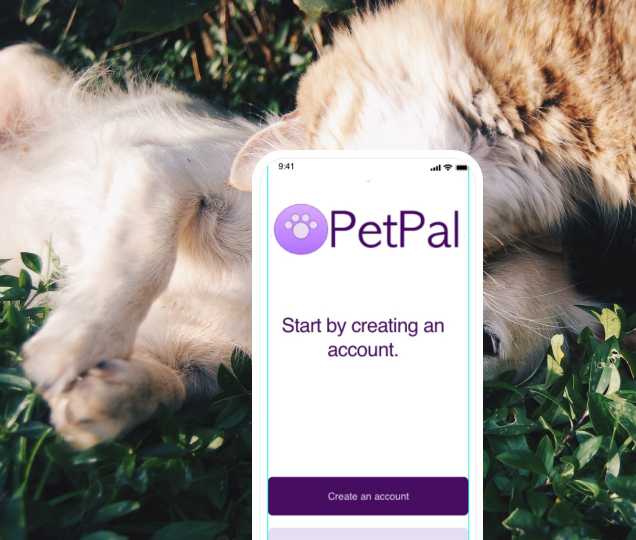Do you have a product concept in mind? Are you considering going straight to the development process? If so, you may be setting yourself up for failure. The old Build and Sell model is dead and replaced by a Sense and Respond process. Modern agile development theory suggests that you follow a 3-step process of discovery to make sure your solution hits the mark with customers. Each step in the process serves specific goals and brings you closer to the desired product. A solid foundation starts with a minimally viable product, or MVP so you can see what resonates with potential customers. Based on the data collected from your MVP, the next step is to create a Minimum Marketable Product so you can get honest feedback from actual users and start earning revenue from early adopters. The development process ends with a Minimum Lovable Product that will allow the product to cross the adoption chasm and reach full-scale acceptance by mainstream customers.
Step 1 – Develop an MVP
MVPs represent a kind of semi-functional product or mockup that demonstrates concepts and features to test your assumptions with customers.
An MVP should:
- Have enough value that a customer will understand how to use it.
- Provide clues to how the final solution will look and function in the future.
- Provide data that the developer can use to refine the final solution.
Why You Need an MVP
Instead of building a finished product (which takes a lot of time and money), experts like Steve Blank recommend leaving the comfort of your office with your computer and building a series of minimum viable products to test pieces of the product incrementally and iteratively. The concept of “build it, and they will come” is deplorable advice.
When it comes to developing MVPs, you want to validate your overall idea or concept by validating each of the key features before you invest time and energy in engineering the final product.
Validate Your Concept
The first step is to understand whether the type of solution you’re building – not the specific product you envision, but rather the general concept of the solution – solves a perceived problem or satisfies the needs of the customer segment.
When starting a new business or developing a new solution, you must first find the answer to one fundamental question:
Does the problem or need that you think your customers have actually exist?
Just because you believe in your solution does not mean you will find others who have the same problem or need.
Validating Features with an MVP
Testing a customer’s response to a potential solution, mockups, wireframes, or clay prototypes of a general idea often elicits feedback much faster and better than a simple verbal description of your offering. The use of MVPs accelerates your learning and prevents you from spending time and money on solutions and features that your customers do not value.
Another reason you should create an MVP is to run mini-experiments. When you build a business model, you will have a series of hypotheses that need testing to validate them. Look at your business model canvas and write down how you expect your prospects will respond to your hypotheses.
For example, if they taste my hummus, I expect 40% of them to agree that they would order it. Now create an MVP to demonstrate the feature you have in mind – hummus made with your recipe – leave your office and get some more honest feedback from your target customer segment.
Remember that the MVP, in this case, is not the whole solution but just a way to demonstrate a feature or element to a prospective customer.
If the feedback says that only 10% of the subjects you spoke to would order your hummus when you expected 40%, that is not a failure. In fact, it is a win because you didn’t spend time and money making that specific recipe part of your menu. The last thing you want is to spend time engineering a feature that the customer segment does not value. By conducting these mini-experiments, you can use the data you receive to modify your hypotheses. It might mean that you need to change your hummus recipe a bit or just scratch it off your menu entirely. What you’re trying to do is maximize your learning.
It’s not until people consistently say yes that you will want to invest in engineering work to finish the product. Once you find a solution that excites the prospect and that they are willing to pay money for, then and only then should you start committing to further development.
One of the most challenging problems entrepreneurs encounter – particularly those entrepreneurs who come from a more technical background – is getting over the feeling that the MVP has to be a bug-free and complete version of the final product. Actually, it’s the complete opposite. With your MVP, you are not building a product; you are only trying to share enough of a key feature to prompt responses from customers.
While many entrepreneurs might say, “I need another month or so to finish the code,” the real question is could you produce a cheap hack or prototype just to receive feedback from somebody? The key is to build something to test your assumptions without doing all the engineering work to create a functioning product.
MVP Process Example:
Let’s say that you have an idea for a mobile app that will allow pet owners and providers such as veterinarians, groomers, kennels, etc., to schedule and communicate essential information with each other, using a mobile interface and web-based backend database. You conducted an online search and discovered that such a mobile app does not exist.
You might begin your MVP journey by preparing a survey and conducting interviews with several pet owners and providers to determine what information about the pet would be valuable to convey in order to schedule and treat the pet appropriately.
Based on the early feedback that you received, you would likely plot a series of Red Routes for your app, to sketch out the critical tasks of the most value to pet owners and service providers that your mobile app should provide. These red routes would represent the foundational user journeys that will provide value to your product by capturing most of the actions of a typical user.
Next, you would present your red routes sketch to your prospective users to get their perspective and see if you missed anything.
After making a few adjustments to your red routes, you would develop a lo-fi wireframe to illustrate the layout of the various pages and show what interface elements will exist on key pages, and again, you would present your lo-fi wireframe to users for feedback.
After a few more refinements, you would create a hi-fi wireframe to demonstrate how the finished screens would likely appear, including the navigation and data fields, so users can get a better feel for the application and how they would use it.
Up to this point, there has been no coding and no database behind the wireframes. Demonstrations are provided, and the navigation between screens is done manually. During the MVP step, you have created a series of mini-experiments to demonstrate to potential users what the mobile app would look like and how they would use it.
Step 2 – Develop a Minimum Marketable Product
While an MVP is designed to validate your product, it is not something designed to drive sales and generate revenue or get feedback from real customers.
After you create an MVP to test the various aspects of your solution, it is time to create a Minimum Marketable Product. A minimum marketable product is the next step in the product development process after creating your MVP. While the MVP focuses on validating assumptions and creating learnings about users’ preferences, a minimum marketable product incorporates a core set of functionalities that addresses the users’ needs so the business can begin to sell the solution to real customers and generate revenue.
Many products are over-engineered and include numerous features that provide little value to the users, cluttering the product and increasing development and maintenance costs. Product developers are too often tempted to add just another cool feature to a product. A minimum marketable product focuses on what really matters and does not include unnecessary features.
A minimum marketable product is released to market with just the “must-have” features. Later, the business can scale the product development by incorporating “nice to have” functionalities. One of the goals of a minimum marketable product is to reduce time-to-market so it can be launched quicker than a feature-rich product and get honest consumer feedback.
As customers begin to use the minimum marketable product, you will start to receive suggestions from these early adopters about new features and bugs or areas of confusion they encountered using the product.
While there are likely many additional features you have in mind for the final product, the minimum marketable product should be stripped down to just the must-haves to make the product usable.
“Perfection is achieved, not when there is nothing more to add, but when there is nothing left to take away.”
Antoine de Saint-Exupery
Minimum Marketable Product Example
Using the example of our mobile app, you decided to limit your minimum marketable product to allow the pet owner to record their contact information and critical information for a single pet. You also choose to focus solely on veterinarians as a single provider and allow them to view the pet owner’s information. Communications are provided not through a messaging app as you envisioned but via a simple email function.
You decided that users would only pay 99 cents to download the app and that veterinarians could interface with the data via the Internet for free.
Your minimum marketable product has limited the functionality to just the main features that will make the mobile app viable. By charging the pet owner a small fee, you can test their willingness to adopt the technology, and by allowing the veterinarians to use it for free, you can encourage them to adopt the concept to help spread the word.
By offering a minimum marketable product, your business concept will begin to generate revenue to subsidize the funding of your further development, while allowing you to survey real consumers of your product for additional feedback.
Step 3 – Develop a Minimum Lovable Product
Minimum marketable products appeal to the early adopters of new products. While your minimum marketable product will provide the must-have functionalities to attract these early adopters and likely contain bugs that have yet to be resolved, a minimum marketable product will frustrate mainstream adopters. Therefore, to cross the chasm from early adopters and reach mainstream adopters, you will have to scale your offering because delivering only the bare minimum would drive mainstream adopters to seek alternative solutions. So, the next step in your product development will be to take the information from your minimum marketable product and use it to create a Minimum Lovable Product.
The quality of products available on the market today has raised the bar of customer expectations. They expect to be delighted, and a minimal offering is no longer enough to gain widespread adoption. That’s where the idea of a minimum lovable product comes in.
It is no longer enough to solve a user’s problem with your product in today’s market. You have to delight them with your offering. Thus, after you have tested the waters with a minimum viable product, offered a minimum marketable product to early adopters, and proved the solution’s general appeal to users and its revenue potential, your next step is to present an offering the masses will love by creating a minimum lovable product.
Markets are crowded, and unless you’re coming up with a unique, disruptive, or innovative idea, the chances are you already have competitors with a loyal user base. Solving the same problem as others without a unique identity will not help you grow.
When you develop a minimum lovable product, you don’t just give users something that solves their problem, you start to build brand awareness within your target market by giving them a solution they love. By giving customers something interesting rather than just functional, you give mainstream adopters a reason to choose your solution over solutions offered by competitors.
To build a minimum lovable product, the business must understand what customers really care about, their problems, and how to make their lives better by using a Sense and Respond model. When you develop a Minimum Lovable Product, you must consider the customer experience as a whole and strive to create a product that users will truly love. As a result, customers will not only purchase your product, but they will also want to see your company thrive by sharing their experiences with others.
Minimum Lovable Product Example
To carry our mobile app to the Minimum Lovable Product step, you decided to add some features based on what you learned from your minimum marketable product rollout. You introduced the ability for pet owners to add their pet’s dietary requirements and the ability to enter multiple pets. You also decided to add the ability to include other types of providers, such as groomers and kennels, and allow providers to use a calendar function to enable pet owners to schedule appointments directly with providers based on their respective availability, removing the back and forth required when scheduling appointments manually. You also agreed to add a reminder function and an internal messaging feature that your early adopters said would make the mobile app much more functional. Finally, you decided to license the use of your app to providers to help them differentiate their services from other providers, rather than charging pet owners to download the app.
Your minimum marketable product has allowed you to demonstrate the capabilities of your mobile app to other classes of providers, so you added groomers and kennels as additional providers. Feedback from your early adopters suggested several features such as an integrated calendar with a reminder function and messaging to streamline the communications so that the mobile app would be more appealing to mainstream pet owners and cause you to rethink your monetization strategy.
Conclusion
Remember that growth doesn’t happen overnight. A solid foundation is vital and starts with an MVP so you can see what resonates with potential customers, evolves into a minimum marketable product so you can get honest feedback from actual users and start making money from early adopters, and finally progresses towards a minimum lovable product that will allow the product to cross the adoption chasm and reach full-scale acceptance by mainstream customers.
A well-documented path of discovery with your minimum viable product, proof of solution acceptance and revenue potential, and real-world feedback based on your minimum marketable product opens the doors to capital sources to enable you to produce a more comprehensive minimum lovable product.
With a truly viable and sought-after product on your hands, word-of-mouth marketing will kick in and propel your product toward real success.
Could your business benefit from using an MVP to develop a minimum marketable product and minimum lovable product?












